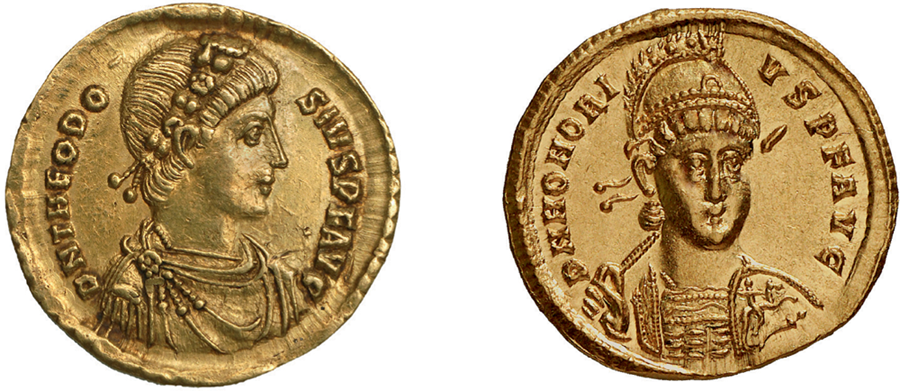
1 and 2. (Left) Gold solidus of Theodosius I (379–95), Dominus Noster, Pius Felix Augustus (Our lord, dutiful, fortunate emperor), minted in Constantinople between 379 and 383. (Right) Gold solidus of Honorius (395–423), with the same inscription as 1, DN PF AVG, minted in Constantinople, 408–20.
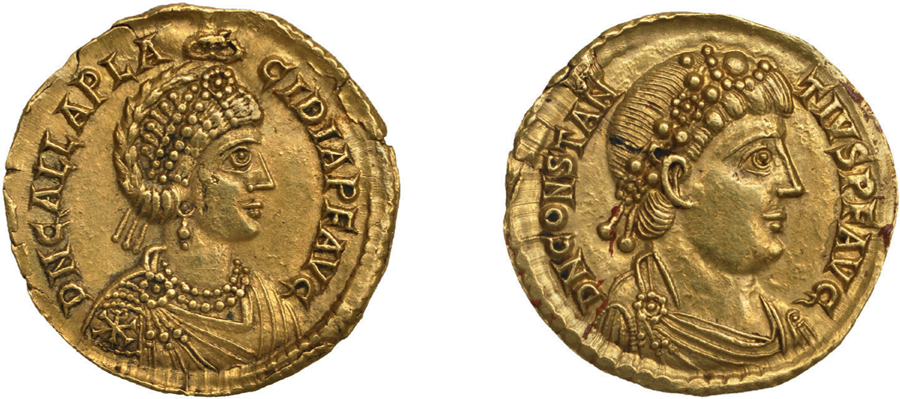
3 and 4. (Left) Gold solidus of Galla Placidia (424–37), also identified as Domina Nostra, Pia Felix Augusta, minted at Ravenna, 426–30. (Right) Gold solidus of Constantius III, DN PF AVG, briefly emperor (421), minted at Ravenna.

5. Gold solidus of Theodosius II struck in Constantinople in 437 to mark the marriage of his daughter Licinia Eudoxia to Valentinian III, shown on the reverse, with the emperor joining their hands and the words Feliciter Nubtiis (To the happily married).

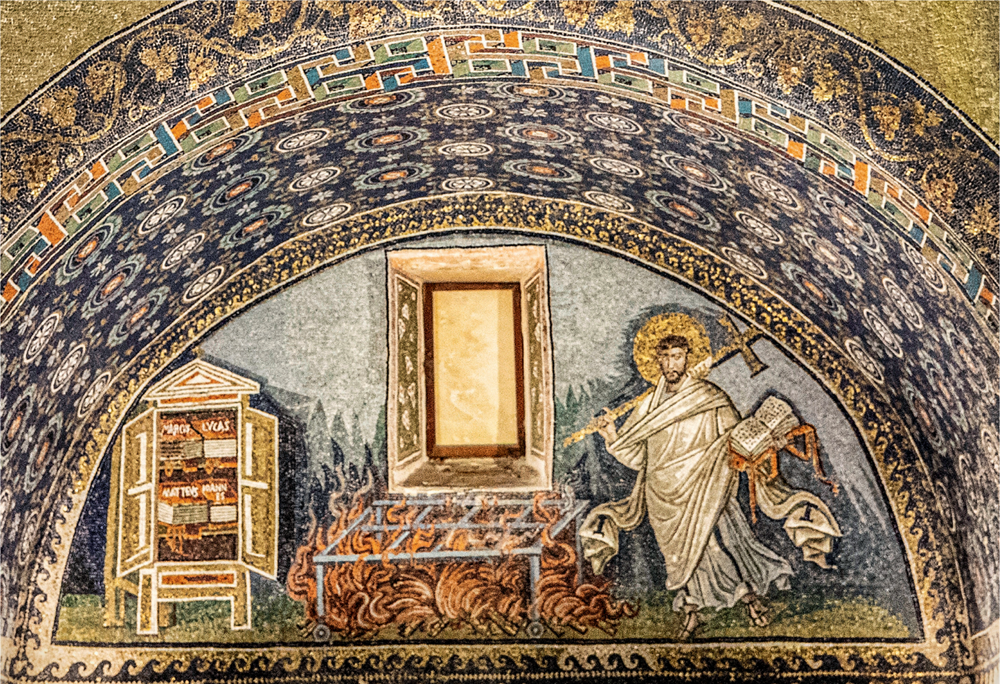
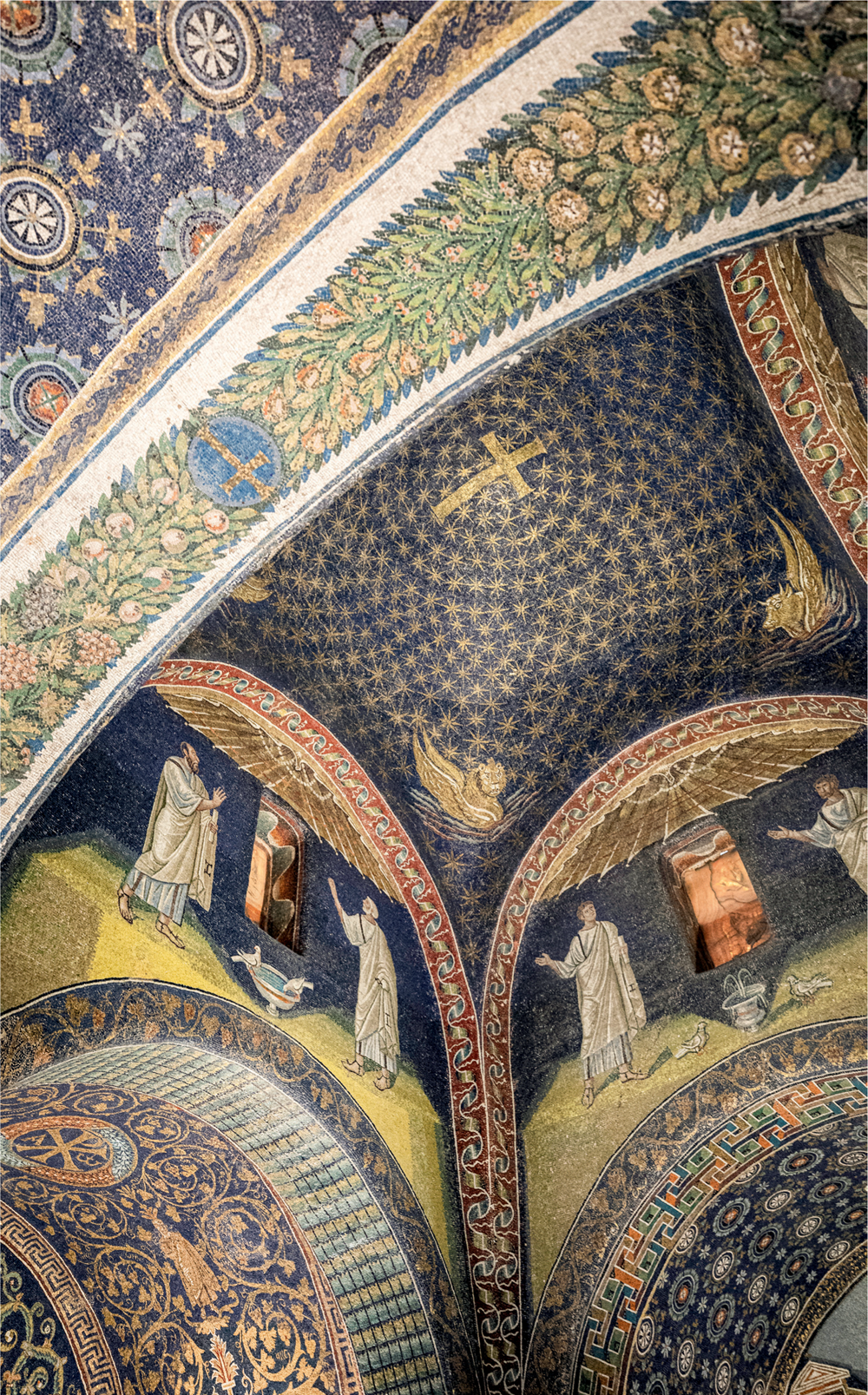
6, 7 and 8. The ‘Mausoleum’ of Galla Placidia, Ravenna (425–50), the chapel attached to the church of S. Croce (Holy Cross) she founded. (Below) An interior mosaic of St Lawrence (or possibly Christ), carrying a long cross and an open book, with the burning grid and cupboard of Gospel books. (Right) The dome of the ‘Mausoleum’. The starry sky and supporting structures are completely covered with symbolic and colourful bands of mosaic, including doves drinking at a water basin.
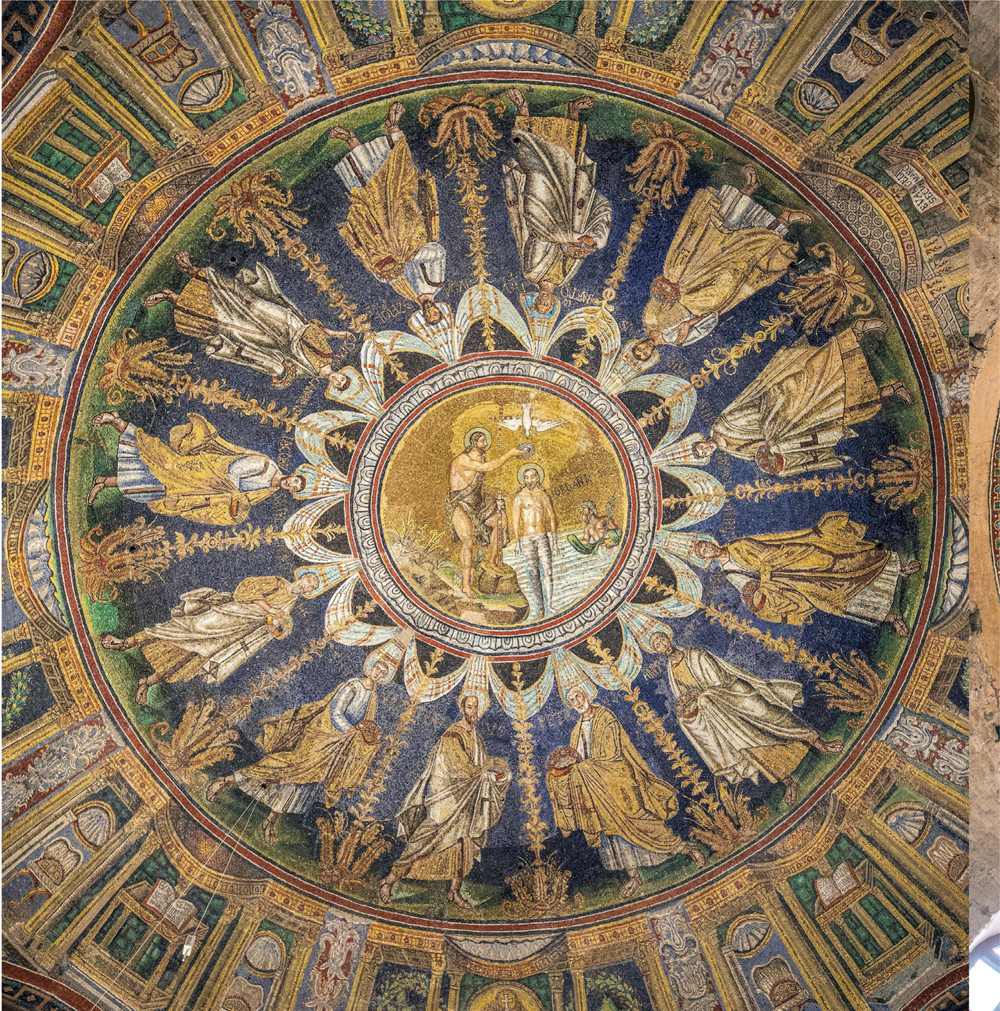

9 and 10. The central domes of the two baptisteries at Ravenna: (above) the Orthodox, commissioned by Bishop Neon (c. 450–73), with a mature, bearded Christ; (opposite) The Arian baptistery, built by Theoderic (493–526), with a distinctly younger, more human Christ.

11. Theoderic’s towering palace church of S. Apollinare Nuovo. An interior view of the south wall, with scenes from the Passion, male figures and the procession of male saints in three tiers of mosaic (493–526).

12. The Palace mosaic (PALATIUM) with the walled city of Ravenna behind it, at the west end of S. Apollinare Nuovo. Originally, Theoderic was shown enthroned under the central arch. This image of the heretical Arian king with his courtiers on either side was removed by Archbishop Agnellus in the 560s, leaving only some hands still visible, and replaced by curtains.

13. The walled city of Classis, CIVITAS CLASSIS (opposite the Palace mosaic), where Theoderic and his officials were portrayed standing in front of the fortifications. When Archbishop Agnellus converted the church to Catholic use, they were also excised and replaced by golden bricks.
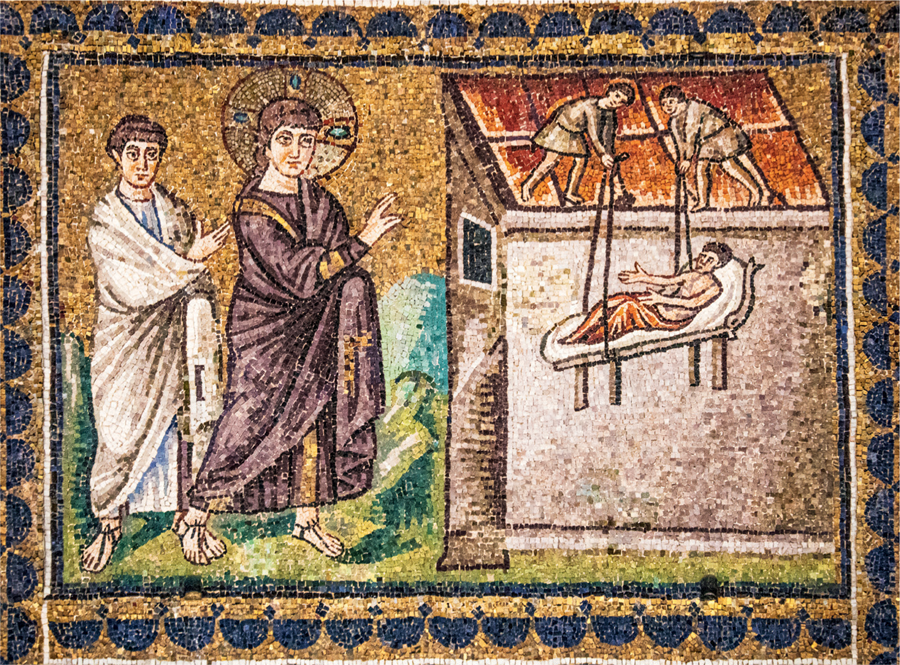
14. A mosaic of Christ healing the paralytic, whose bed was let down through the roof on the north wall of S. Apollinare Nuovo, as recounted in Mark 2.4 and Luke 5.19.

15. On the south wall, a mosaic of the Last Supper, with Christ (now bearded) and the twelve disciples reclining on dining couches, around a semi-circular table with loaves and fishes, as described in Matthew 26, Mark 14, Luke 22 and John 13.